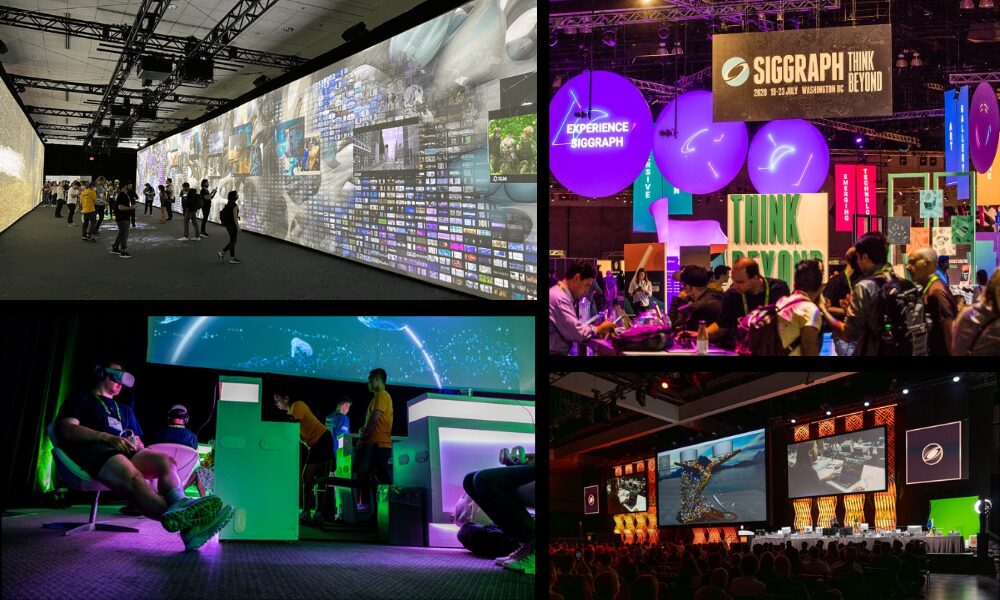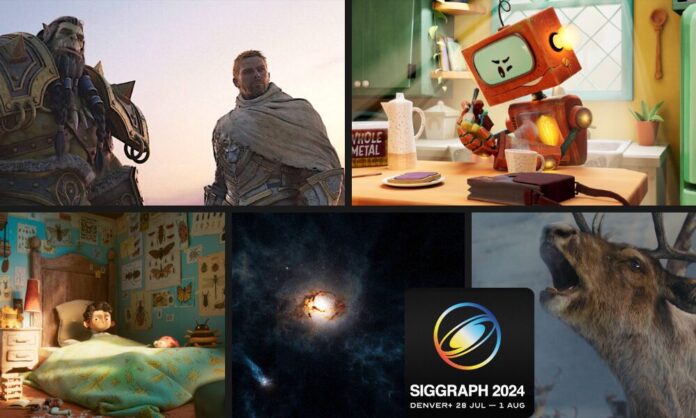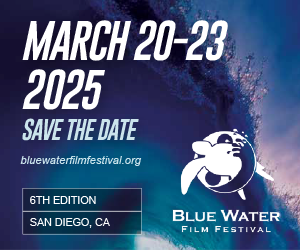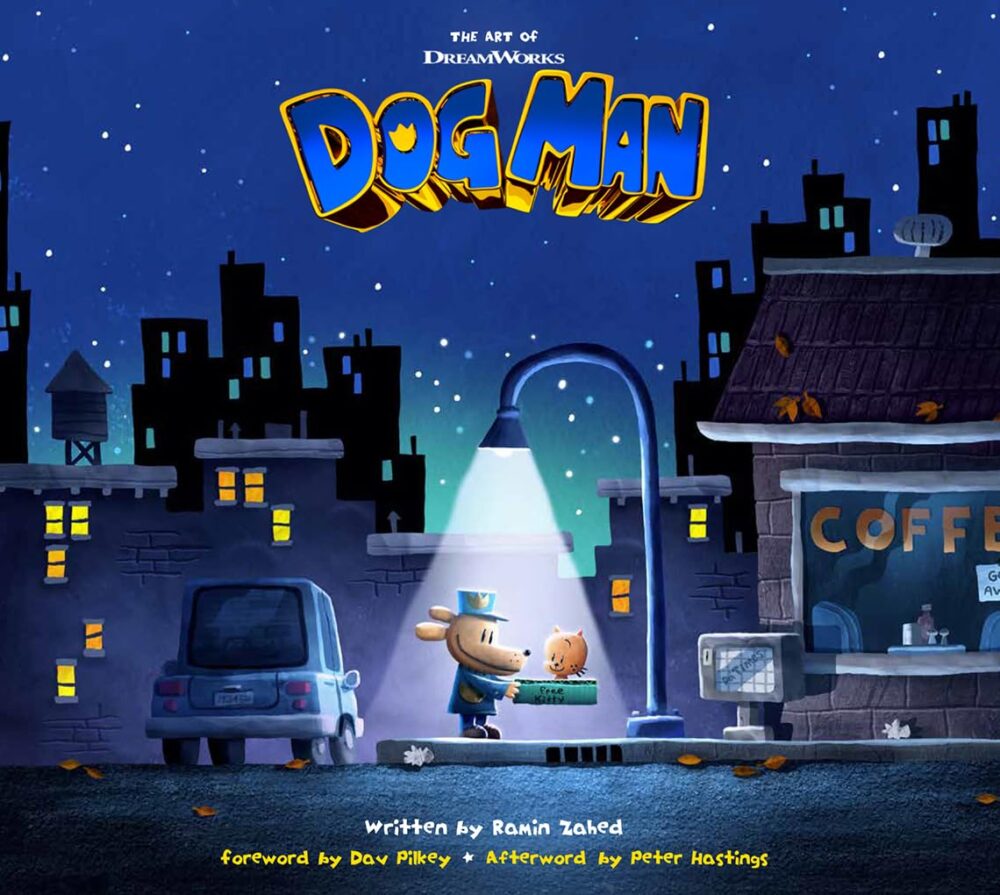|
Getting your Trinity Audio player ready...
|
SIGGRAPH is marking the start of its second half-century by returning to Colorado (July 28-Aug. 1), the state where its first conference was held in the 1970s. So there’s likely to be more than one retro tradition on display as the organization highlights how far the computer-graphics industry has come.
Especially notable is the expanded programming in the conference’s Computer Animation Festival, which is reviving the tradition of presenting two distinct daytime shows called Animation Selects. In recent years, juried selections had been confined to the Electronic Theater (colloquially called “the nighttime show”).
Although the “ET” will remain a hot ticket in 2024, this year’s Electronic Theater director John Kalaigian says a larger formatting of the Computer Animation Festival was a welcome opportunity to craft different show reels for the afternoon sessions. “I know that the audience regards our evening selections as the marquee portion of the Computer Animation Festival, but I don’t look at the daytime shows as anything less than the caliber of the Electronic Theater,” he says. “I felt it was very important to widen the scope of offerings.”
Eye-Popping Collection
The juried selections from all three programs present a smorgasbord of CG shorts — ranging from student and indie films to professional advertising, visual effects, game imagery and scientific visualization. “There are challenging choices that have to be made for timing considerations because of the number of submissions we get,” explains Kalaigian, who says SIGGRAPH received around 300 submissions this year.
“Animation Selects was a welcome opportunity to broaden the appreciation for more work and get more foot traffic into those shows. We found time slots that did not compete with other events at SIGGRAPH. The ‘lunch window’ is when most people are available, and I hope the appetite to see more content will prove fruitful, and we’ll see the resurgence of daytime shows.” Lest anyone think the Animation Selects are “also-rans,” Kalaigian cites the high-profile daytime screening of Self, an innovative collaboration between Pixar and stop-motion animation legend Phil Tippett. “It’s an extended programming opportunity to present the tremendous work that was done on that exceptional project.”
“The key was to pepper in diverse content,” notes Kalaigian, who previously worked on Blue Sky feature films such as Epic and Rio 2 and headed the CG department at the commercial studio Hornet. He observes that the “A-student or independent piece isn’t likely to get the attention of a production session or a technical paper as much as a larger studio would. So we wanted to give the audience a chance to see work they won’t see anywhere else at SIGGRAPH.”
‘I feel we still lack the forensic tools for data analysis that can validate whether an author is being truthful or obfuscating their visuals [with AI ]. This was definitely open for discussion by our jury.’
— SIGGRAPH’s Electronic Theater director John Kalaigian
To that end, this year’s attendees will have the chance to see Scientific Visualization pieces from NASA and the California Academy of Sciences. The power of computer animation to transform data into stunning imagery has been a foundational attraction at SIGGRAPH for decades, when planetary flybys from the Jet Propulsion Laboratory were crowd-pleasers. “Those were seminal achievements,” says Kalaigian, whose own technical work has included motion picture simulations of believable foliage. “We shouldn’t lose sight of how data visualization has allowed today’s filmmakers to achieve increasing levels of realism.”
Since many visualization pieces typically have been designed for presentation in planetariums and domed theaters, it’s a challenge to adapt them for SIGGRAPH screenings. But this year’s festival features Spark: The Universe in Us, which uses astrophysical simulations to take viewers on a journey through a three-dimensional model of the Milky Way, exploring the origins of the solar system. Kalaigian explains that “this content was reformatted from a full-dome presentation so that it could be appreciated as a flat-screen experience.”
Of course, there will be familiar names behind professional entertainment selections in both the Electronic Theater and the Animation Selects. They include Blizzard’s World of Warcraft game cinematic, The War Within, Cinesite’s visual effects and animation from the True Detective series and Double Negative’s contributions to HBO’s The Last of Us.
But one aspect of this Computer Animation Festival that will be different from prior years is the relatively small number of computer-animated commercials. CG ads were festival mainstays during the formative years of SIGGRAPH, when deep-pocketed commercial advertisers were among the few patrons who could afford to finance spots from then-fledgling production companies such as Pixar and Pacific Data Images. “Advertising is underrepresented in the larger scheme because that kind of animation exists now on tighter schedules,” observes Kalaigian. “I hope in years to come that balances out. But it’s been cyclical. Right now, we seem to be leaning heavily toward short-form narrative storytelling.”
“We’ve seen a significant rise in short films and classic narrative structures,” Kalaigian reports. “Our jury tried not to consider which company or school submitted a work but what each narrative was trying to achieve. The essence of a story was paramount. Each year that becomes more and more of a challenge, as the complexity keeps rising. If you look at these pieces without knowing any of the filmmakers’ credentials, you wouldn’t be able to tell if it’s the work of a student, an independent filmmaker or a small boutique studio.”
In fact, the Best in Show Award this year went to a Carnegie Mellon University team led by teacher Moshe Mahler for The Art of Weightlessness, which evokes the style of an animated documentary. And the Jury’s Choice Award went to the self-funded film Patterns by German animator Alex Glawion, who rendered over 100 shots on computers in his living room.

The Best Student Award, for After Grandpa, went to the team from École MoPA for its poignant tale of a young boy and the ghost of his departed grandfather. The group faced stiff competition — not only from U.S. entries representing Ringling College, Emory University, Savannah College of Art and Design, Australia’s University of Technology Sydney and Japan’s Digital Hollywood University — but also French schools, including École des Nouvelles Images, Supinfocom Rubika, ESMA, Art FX and Pole’s 3D Digital and Creative School (now called Piktura). This “Franco-trend” was unknown to the jury during blind judging, but there turned out to be so many striking French student selections that SIGGRAPH could mount a Gallic mini-festival (bring your own croissants!).
What’s become increasingly evident in current student work is the use of tools like Blender and an interest in AI. Emory University student Isaac Gazmararian used both Blender and the AI tool Deforum to create the animated and morphed images of Remembrance, a journey through the memories of his late grandmother. Although it took a painstaking, frame-by-frame effort to create this “thought-driven montage,” the AI process will undoubtedly become much easier over time.
Aided by Robots?
Kalaigian says that only a handful of AI-related submissions were received this year, and methods for judging them are still emerging. “I feel we still lack the forensic tools for data analysis that can validate whether an author is being truthful or obfuscating their visuals. This was definitely open for discussion by our jury.”
This year’s jurors were as diverse as the varied programs they judged. Kalaigian’s fellow jurors came from institutions as different as Mattel TV Studios, Blizzard Entertainment, Method Studios, Georgia Institute of Technology, University of Utah School of Medicine, Rocky Mountain College of Art and Design, ARES Corporation/NASA Goddard Space Flight Center, Hornet Studios, Electronic Arts, Rockstar Games and BamBam FX.
“I think having some prior SIGGGRAPH experience among the jurors is helpful, but we also had colleagues who’d never been to SIGGRAPH,” he concludes. “That’s not to say those individuals had not been on juries before; it’s that they came in with an open mind about what would be in a ‘traditional’ SIGGRAPH reel. They could look at work strictly from the point of view of technical and artistic merit. They brought their passions from their respective fields, but they also had an appetite — whether or not they work in data visualization or visual effects or animation — to enjoy the show like kids in a movie theater. That’s the joy of it all.”
To find out more, visit s2024.siggraph.org.








![John Kalaigian [ph provided by SIGGRAPH]](https://www.beta.animationmagazine.net/wordpress/wp-content/uploads/Electronic-Theater-Director_John-Kalaigian-240x240.jpg)


 Win 'The Art of DreamWorks Dog Man'!
Win 'The Art of DreamWorks Dog Man'! 


